Mark Anthony Neal's Blog, page 846
January 11, 2014
Preview--'Left of Black' Talks Black Women and Hair & The Latining of America
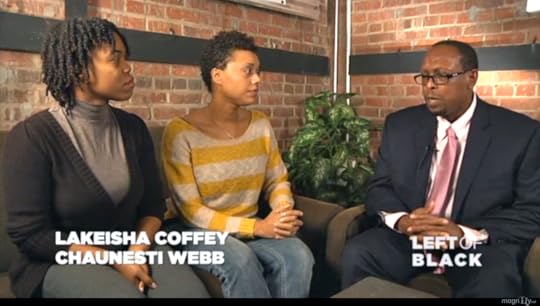 The Root TV
The Root TVLeft of Black host Mark Anthony Neal sits down with Chaunesti Webb and Lakeisha Coffey to talk about their upcoming play, I Love My Hair: The Remix, which opens at the ManBites Dog Theater on January 16, 2014.
Later Professor Claudia Milian discusses her new book, Latining America: Black-Brown Passages and the Coloring of Latino/a Studies . Professor Milian teaches at Duke University.
Published on January 11, 2014 08:09
The Red Pill & The Blue Pill: The Summer of 1996—Hip-Hop 's Big Bang Theory by 9th Wonder
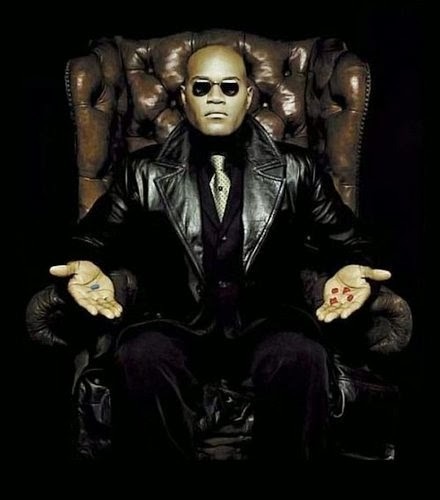 The Red Pill & The Blue Pill:
The Summer of 1996—Hip-Hop 's Big Bang Theory
by Patrick Douthit aka 9th Wonder | special to NewBlackMan (in Exile)
The Red Pill & The Blue Pill:
The Summer of 1996—Hip-Hop 's Big Bang Theory
by Patrick Douthit aka 9th Wonder | special to NewBlackMan (in Exile)As far as music consumption prior to 1996, music fans were pretty much on the same page as far as who we were listening to, where to find them, and how to support them. From R&B to Hip-Hop, we could all sit around and turn each other on to what was dope, hot, exciting, etc., without being so behind, or "lost in the sauce".
Enter the summer of 1996. There was an alternate reality for a small portion of us, if you will, created RIGHT under our noses. This particular alternate reality was called, "The Underground." There were two albums that created the reality and alternate reality for all of us that loved, revered, respected, and consumed hip-hop on a daily basis; Nas’s It Was Written and De La Soul's Stakes is High.
For the most part, especially throughout the college communities of the South and East Coast, a majority of hip-hop fans bought either one, the other....or BOTH. For the ones who bought Nas's It Was Written with the single "If I Ruled the World" ft. Lauryn Hill, this album was mainstream enough, played in the clubs, and still had the credibility to be seen as a "Hip-Hop" album.
De La Soul's Stakes Is Highand even their previous album Buhloone Mind State, was the gateway to the alternate reality to the other side of the Matrix. On De La Soul's Stakes Is High, a budding emcee by the name of Mos Def and a young producer by the name of Jay Dee (Dilla) were showcased, but not with the same exposure as It Was Written.
While It Was Written kept our Hip-Hop needs on the forefront, Stakes Is High led a lot of us follow Mos Def, and Jay Dee to a place where, although the quality of music was top notch and competitive, it wasn't receiving the same coverage and radio airplay as it's counterparts. In turn, to follow the music that was similar to the Mos Def’s, De La's, Jay Dee's, and the like, you had to seek the music in other ways, mainly the internet.
Enter 1997. By this time, an influx of No Limit Records was invading the airways. I found myself being very frustrated with not being able to hear the music on the radio that I loved.
One of my best friends and college buddies Michael Burvick was sitting downstairs in the computer lab in North Hall at NC State University, clicking through an internet site called HipHopSite.com. "Come check this out" Burvick said, "It's a bunch of dope shit on here we can order...and check this group out right here that Questlove is talking about called Slum Village." This is where the wormhole started.
That wormhole lead us to so much R&B and Hip-Hop that we longed for, without giving an iota about what the radio was playing. Sites like HipHopSite, SandboxAutomatic, and a ton of other sites is where between 1996-2000, I first heard Slum, Dwele, Talib, MF DOOM, MadLib, Goapele, Ledisi, and tons of other people that a lot of music fans hardly got a chance to hear because they don't have the money, nor the resources to reach that "Mainstream Reality" that Nas, Jay Z, and only a few artists have lived in for years.
That was a turning point for me. I started to notice that folk my age was pretty much on the same page as far as knowing about artists...all the way up to about 1996-1997, and I never understood why until recently. I don't believe that it has anything to do with my love for music, it has everything to do with the accessibility of music, where to find it, knowing where to look, and the like. Some of us back in the 1996-1997 walked through that alternate reality door...and just never looked back.
A lot of us just walked through that door last week, and find worlds of music they've missed out on for the past 15 years, which can be exciting, but at the same time, overwhelming. Due to the many ways to receive music, it can be very overwhelming and almost sensory overload (I find this out when someone goes on youtube or google and types in "9th Wonder"...). It's almost as if now instead of just watching "The Pros," we all have to pay attention to the "Minor Leagues" as well.
Seven-time Grammy Award nominee Kendrick Lamar lived in the minor leagues for nine-and-a-half years before he made the Pros....a lot of us missed out on tons of great music.
Music is out here people. It's like the Matrix; it's the blue pill or the red pill...
***
Born Patrick Denard Douthit in Winston-Salem, NC, 9th Wonder is a Grammy Award Winning Producer, DJ, College Lecturer, and Social Activist. 9th Wonder is the president, founder and CEO of It's a Wonderful World Music Group, which includes Jamla Records. The documentary The Hip-Hop Fellow (dir. Kenneth Price), which documents Douthit's tenure as a Fellow at Harvard's HipHop Archive, will be released this spring.
Published on January 11, 2014 07:20
January 10, 2014
Not 'Just a Band': A New Age for African Artists
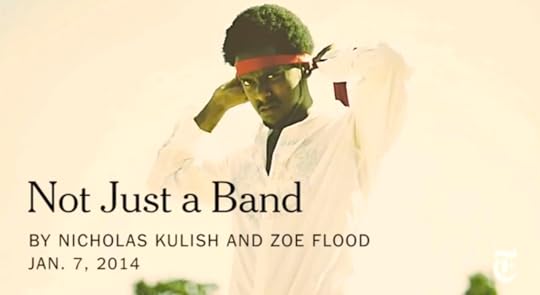 New York Times Video
New York Times VideoWith the expectations of democracy and liberated by the Internet, the Kenyan artist collective Just a Band has found an international audience for its mix of entertainment and political content.
Published on January 10, 2014 20:19
January 6, 2014
Bowling for Dollars: The Myth of the Student-Athlete
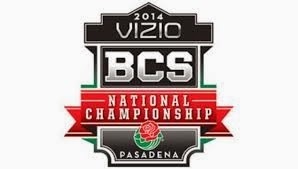 Bowling for Dollars: The Myth of the Student-Athlete
by David J. Leonard and C. Richard King | NewBlackMan (in Exile)
Bowling for Dollars: The Myth of the Student-Athlete
by David J. Leonard and C. Richard King | NewBlackMan (in Exile)The new year doesn’t merely mark the return to school, the return of Congress to do nothing yet again, and to endless named winter storms, but the conclusion of yet another season of college football. While executives and president’s are busy counting their gold-lined pockets, we are left to yet again reflect on the incongruous messages peddled by the NCAA and its media partners and the realities of college sports.
The culmination of the football season (and the realities evident during March sadness), with the barrage of corporate advertising masked as collegiate football, also becomes a moment to saturate the airwaves with half-truths and distortions, fantasies and mythologies, about the “amateur” athlete otherwise known as the STUDENT-ATHLETE. Taylor Branch describes the historic context as follows:
Today, much of the NCAA’s moral authority—indeed much of the justification for its existence—is vested in its claim to protect what it calls the “student-athlete.” The term is meant to conjure the nobility of amateurism, and the precedence of scholarship over athletic endeavor. But the origins of the “student-athlete” lie not in a disinterested ideal but in a sophistic formulation designed, as the sports economist Andrew Zimbalist has written, to help the NCAA in its “fight against workmen’s compensation insurance claims for injured football players.”
Although a longstanding concept, one that ultimately constrains agency and power resulting in a system of exploitation and abuse, the history of the student-athlete parallels the increased financial power of collegiate sports. With each television contract, with 7-figure coaching salaries, and a corporate partners ranging from CBS to the U.S. military, the NCAA needs the “student-athlete” mythology more than ever.
The mythology surrounding student athletes creates a system where student-athletes have no power regarding their future. From the fact that scholarships are renewable each year to the inability of students to take their talents to another university, the lack of protections resulting from the amateur myth creates a system devoid of freedom.
For example, shortly after the hall-of-fame coach Larry Brown arrived on campus at SMU, he told several players that their services were no longer needed; in other words, he kicked them off the team. Can you imagine if a university hired a new department chair, and the first order of business was to tell several teaching assistants their services were no longer needed? That is what Brown told several student-athletes, although each would be allowed to remain at the school on scholarship. Despite the public pronouncements regarding the importance of academics, about student-athletes, the dismissal of these players is yet another reminder of what counts: athletics performance and wins/losses.
Jeremiah Samarrippas, the Mustangs starting point guard was one of those dismissed from the team, telling the “school’s student newspaper that Brown basically told him that he “wasn’t good enough to play for him.’” The callousness of a system that has turned student-athletes into athletic commodities is nothing new, in part resulting from a NCAA rule change in the 1970s that made scholarships renewal each year. Regarded as little more than property, these players were tossed away with little regard for their future.
Such disregard has become commonplace, and is evident in the recent case involving a student-athlete at Florida International University. Dominique Ferguson decided that FIU was not the place for him. Like other students, athletes and otherwise, he realized that FIU was not the best fit for him academically and personally. "I wanted to go to a school close to my family in the Midwest. I went to Hargrave [Military Academy in Virginia] my senior year in high school and came straight here and had seen my family only a handful of times. It was hard on me and affected how I played,” Unfortunately, his request was denied first by the athletic department and then by a “3-person academic board,” who paternalistically and arrogantly sent the following email: “After considering your email appealing the decision of the Athletic Department to refuse to grant you permission to speak to and transfer to another institution, and after listening to you during the appeal hearing, the appeal panel affirms the Athletic Department and denies your appeal. We believe it is in your best interest to continue your studies here at FIU. We would particularly encourage you to apply yourself to your courses for the rest of the semester.”
According to Fergusson, his experiences at FIU was a stark reminder of what Dave Zirindescribes as collegiate sports’ “sham-amateurism:” “It was like I was held hostage,'' Ferguson said. "They made me feel like I could never leave here.” While coaches, fans, and administrators often balk at any invoking of the phrase slavery to describe collegiate sports, situations like Fergusson’s make it hard not to make connections with the history of servitude. As noted by Taylor Branch, in The Shame of Sports , “Slavery analogies should be used carefully. College athletes are not slaves. Yet to survey the scene—corporations and universities enriching themselves on the backs of uncompensated young men, whose status as “student-athletes” deprives them of the right to due process guaranteed by the Constitution—is to catch an unmistakable whiff of the plantation.”
The experiences of Fergusson are emblematic of the cartel model embraced within collegiate athletics. The power of the NCAA and their respective members is able to restrict the movement and opportunities available to student-athletes. Isn’t this by definition a cartel? Unable to transfer to a school that met his academic needs and his desires to be close to home, Fergusson has decided to enter the NBA draft, one of the few paths available to him in his search for freedom.
The myth of amateurism fuels the exploitative relationship and the lack of compensation. Student athletes are required to spend their wages at the “company store.” Akin to sharecroppers who not only worked the land for virtually no compensation, but what little compensation they received had to be spent at the company store (usually owned by the land owner). From food to tools, sharecroppers were forced to use their wages at these stores, often leading to debt and additional subservience.
Collegiate athletics is similar to sharecropping in that student-athletes must use their wage to pay for tuition, books, and room and board within the campus community. According to McCormick and McCormick, “By this last arrangement, then, these athletes, unlike any other working people, are not free to spend their limited wages where they choose, but must spend them on college tuition, books, and other institutionally related expenses, regardless of their real needs or those of their families.” The tuition provided to student-athletes in compensation of blood, sweat, and tears, is losing its value each and every year. Beyond abysmal graduate rates and the funneling of student-athletes into “jock majors,” student-athletes are paid in a wage that is losing its value.
Sports, particularly basketball and football, and its athletes generate millions for the NCAA, its representative schools, coaches, and a number of corporate partners. It is a billion dollar industry. Yet, the wages paid are dubious at best and the value of that compensation is in steady decline. This becomes even more striking as we focus our attention on the disproportionate number of African American student-athletes within revenue sports.
The level of exploitation is certainly aggravated by the amounts of money generated by these athletes within these sports. Worse, yet given the continued significance of race, the level of compensation provided to black “student-athletes” is that much worse. The unemployment rate for black college graduates over 25 is almost twice the national average for blacks compared to whites (8.4 versus 4.4). Studies have also shown that blacks are 50% less likely to receive a call-back from a potential employer; that whiteness is worth 8-years of job experience; that a white job candidate with a felony conviction is more likely to secure a job than black men without any criminal record, and we can see the fools gold that is collegiate athletics.
Worse yet, despite often not being able to live above the poverty line, despite the inability to provide money for their families, the NCAA, its partner institution, and corporate enablers are smiling all the way to the bank. Their diamond-studded pockets are lined with cash generated by just a handful of student-athletes.
Imagined as amateurs, denied the rights as workers, and constructed through America’s racial fabric, today’s student-athletes, especially those with America’s revenue sports, are not only denied rights as laborers but also are denied the basic social contract. A lawsuit brought by former athletes, most notably Ed O’Bannon of UCLA, offers a case and point. The athletes filed suit against the NCAA, arguing rightly that they did not consent to having their likenesses used in popular and profitable video games, nor did they share in profits generated by them.
We noted above some of the ways the slavery analogy applies to college athletics, it might be good to remind ourselves of the two complimentary systems consuming black bodies that satisfies the drives and desires of white America today, a nation in which those with power and privilege deny of the ongoing and systematic significance of race and power. On the one hand, the criminal justice system secures inequality and injustice through race-based policing and incarceration assuages the manufactured fears of white America; on the other hand, the sport-entertainment complex feeds its dreams of “one shining moment” and momentary intoxications during bowl season and March madness by capturing and controlling those supposedly free blacks, hiding their bondage under cover of academics and amateurism.
The most prestigious and profitable college sports programs in the country are all historically white institutions, some which resisted for decades efforts to integrate them, and which continue to remain overwhelmingly white with limited outreach to or interaction with historically under-represented groups . In addition many boast embarrassing rates of minority recruitment and retention. Now, ironically, even as these ivory towers remain disproportionately white, they happily exploit those too long excluded and marginalized. Moreover, these white dominated institutions of higher learning still refuse to properly educate African Americans.
Where, historically, it was the color bar, Jim Crow, and separate-but-equal that enabled them to avoid their obligations, today, it is the primacy of on-field performance, overt and covert efforts to discouraging thinking and learning, and the threat of losing one's scholarship.
Graduation rates for black athletes should remind us how little interest or care most institutions of higher-learning have for their black student-athletes: it as if most colleges and universities regard them as chattel that can be easily replaced with another disposable body.
This pattern of denying access and blocking education attainment, same as it ever was, multiplies the exploitation. Big time college sports feeds on a system of primary and secondary education that under-educates African Americans, skimming of the most talented, while rarely giving back to the communities from which they come and to which they will return, a second thought.
The NCAA has structured a system in which coaches, scouts, and administrators are all too happy to channel the dreams and desperation of young black men who often have no other options and nothing to fall back upon but their bodies. In the process, they not only reinforce tacitly the notion of black physicality – in contrast with white intellect, but they also strengthen racial hierarchies, including the barriers that have kept African Americans from participating fully as students and as athletes.
***
C. Richard King is Professor of Ethnic Studies at Washington State University at Pullman and the author/editor of several books, including Team Spirits: The Native American Mascot Controversy and Postcolonial America.
David J. Leonard is Associate Professor in the Department of Critical Culture, Gender and Race Studies at Washington State University, Pullman. Leonard’s latest books include After Artest: Race and the Assault on Blackness (SUNY Press) and African Americans on Television: Race-ing for Ratings (Praeger Press) co-edited with Lisa Guerrero. He is currently working on a book Presumed Innocence: White Mass Shooters in the Era of Trayvon about gun violence in America.
Published on January 06, 2014 16:29
Left of Black S4:E14: How Black Power Transformed Soul Music
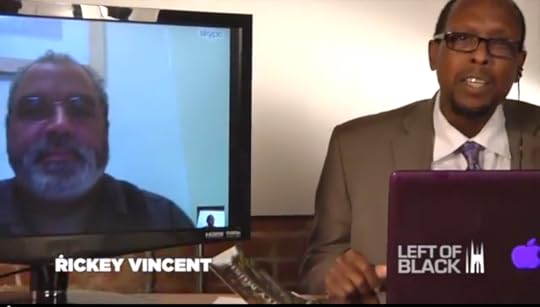 Left of Black S4:E14: How Black Power Transformed Soul MusicLeft of Black host and Duke University Professor Mark Anthony Neal is joined via Skype by Rickey Vincent, author of
Party Music: The Inside Story of the Black Panthers’ Band and How Black Power Transformed Soul Music
(Chicago Review Press). Vincent, a lecturer at the University of California at Berkeley, is also the author of the classic
Funk: The Music, The People, and The Rhythm of The One
(1996).Left of Black is a weekly Webcast hosted by Mark Anthony Neal and produced in collaboration with the John Hope Franklin Center at Duke University.*** Episodes of Left of Black are also available for free download in @ iTunes U*** Follow Left of Black on Twitter: @LeftofBlackFollow Mark Anthony Neal on Twitter: @NewBlackManFollow Rickey Vincent on Twitter: @RickeyVincent
Left of Black S4:E14: How Black Power Transformed Soul MusicLeft of Black host and Duke University Professor Mark Anthony Neal is joined via Skype by Rickey Vincent, author of
Party Music: The Inside Story of the Black Panthers’ Band and How Black Power Transformed Soul Music
(Chicago Review Press). Vincent, a lecturer at the University of California at Berkeley, is also the author of the classic
Funk: The Music, The People, and The Rhythm of The One
(1996).Left of Black is a weekly Webcast hosted by Mark Anthony Neal and produced in collaboration with the John Hope Franklin Center at Duke University.*** Episodes of Left of Black are also available for free download in @ iTunes U*** Follow Left of Black on Twitter: @LeftofBlackFollow Mark Anthony Neal on Twitter: @NewBlackManFollow Rickey Vincent on Twitter: @RickeyVincent
Published on January 06, 2014 15:39
Black Folk Don't: "Join the NRA"
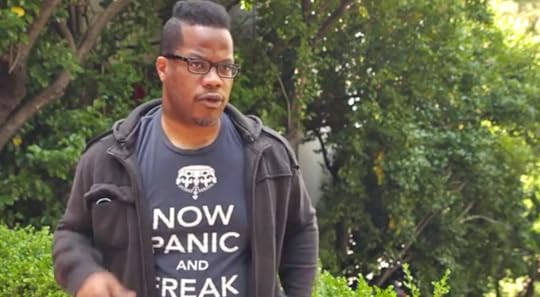 Black Folk Don't
Black Folk Don'tIn our final episode of the season, we look at black folk and the NRA. It's been an amazing season and we are so grateful to all of your for watching and everyone we interviewed.
Published on January 06, 2014 14:42
January 5, 2014
Don't Call Him Theo: Malcolm-Jamal Warner On Life After 'Cosby'
Published on January 05, 2014 12:35
MHP Show: A Real ‘Doc McStuffins’ Gets a Tribute
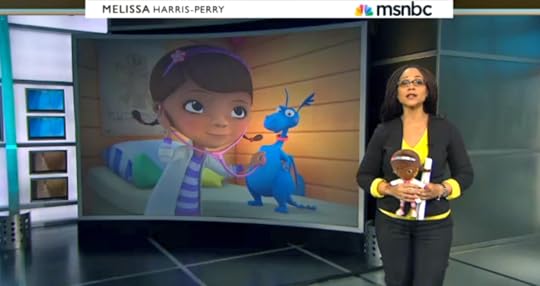 MHP Show
MHP ShowA real ‘Doc McStuffins’ gets a tributeMelissa Harris-Perry relays the news that the heretofore unnamed mother of popular Disney character “Doc McStuffins” will be named after real-life physician Dr. Myiesha Taylor.
Published on January 05, 2014 12:21
January 4, 2014
State of Conflict: North Carolina
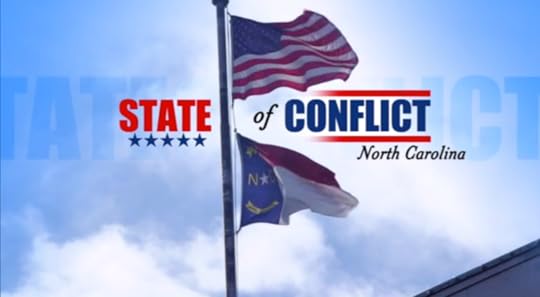 BillMoyers.com
BillMoyers.comFirst it was Wisconsin. Now it’s North Carolina that is redefining the term “battleground state.” On one side: a right-wing government enacting laws that are changing the face of the state. On the other: citizen protesters who are fighting back against what they fear is a radical takeover. This crucible of conflict reflects how the battle for control of American politics is likely to be fought for the foreseeable future: not in Washington, DC, but state by state.
Published on January 04, 2014 08:24
January 3, 2014
"How We Put the Negro to Bed and Woke Up Black"--Rickey Vincent Talks New Book on Black Panther Party
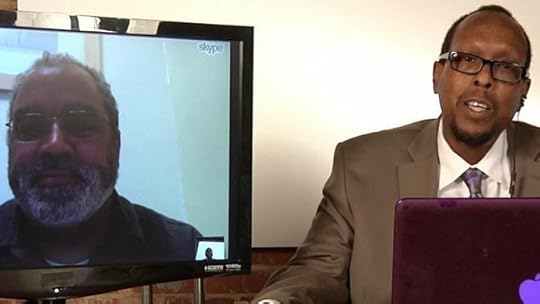 Left of Black Friday @ TheRoot.com
Left of Black Friday @ TheRoot.com
Host Mark Anthony Neal sits down with Rickey Vincent, a lecturer at the University of California, Berkeley, to discuss Vincent’s recently released book, Party Music: The Inside Story of the Black Panthers' Band and How Black Power Transformed Soul Music.
Watch Segment
Watch the Full Episode @ Left of Black on Monday January 6th.
Published on January 03, 2014 16:19
Mark Anthony Neal's Blog
- Mark Anthony Neal's profile
- 30 followers
Mark Anthony Neal isn't a Goodreads Author
(yet),
but they
do have a blog,
so here are some recent posts imported from
their feed.




